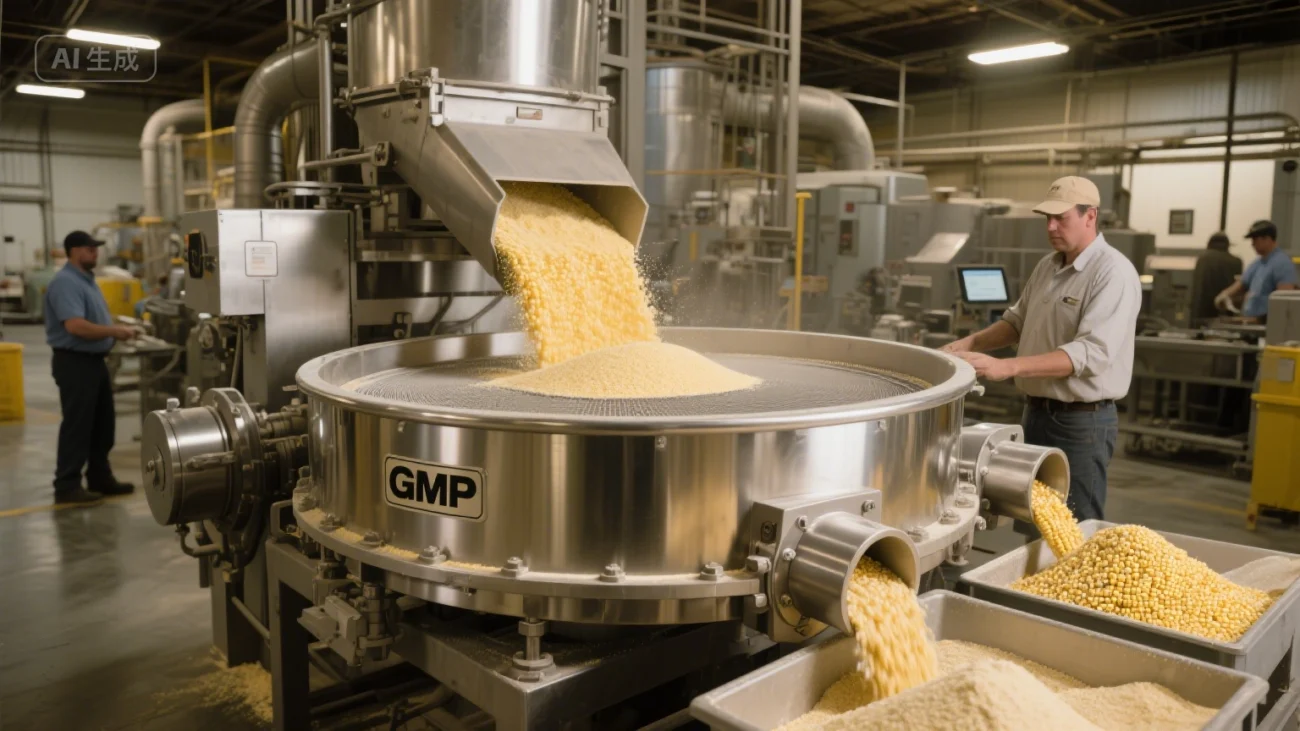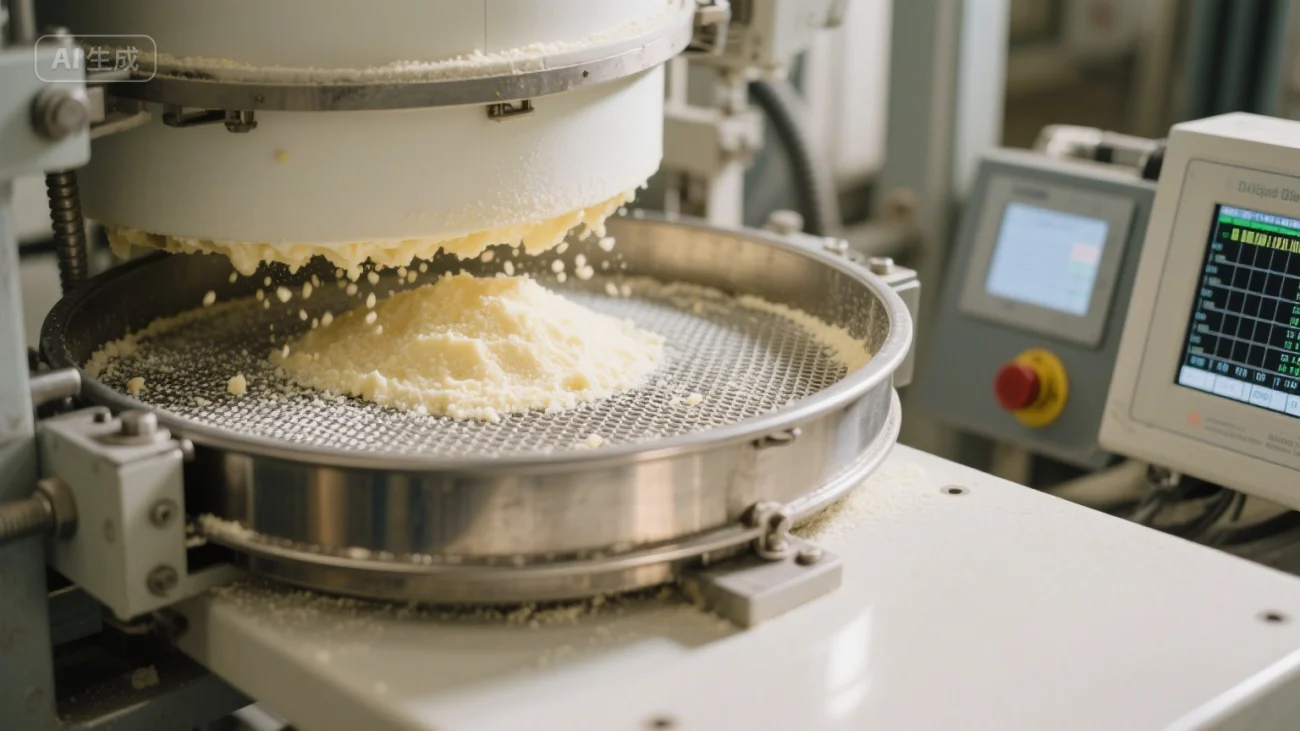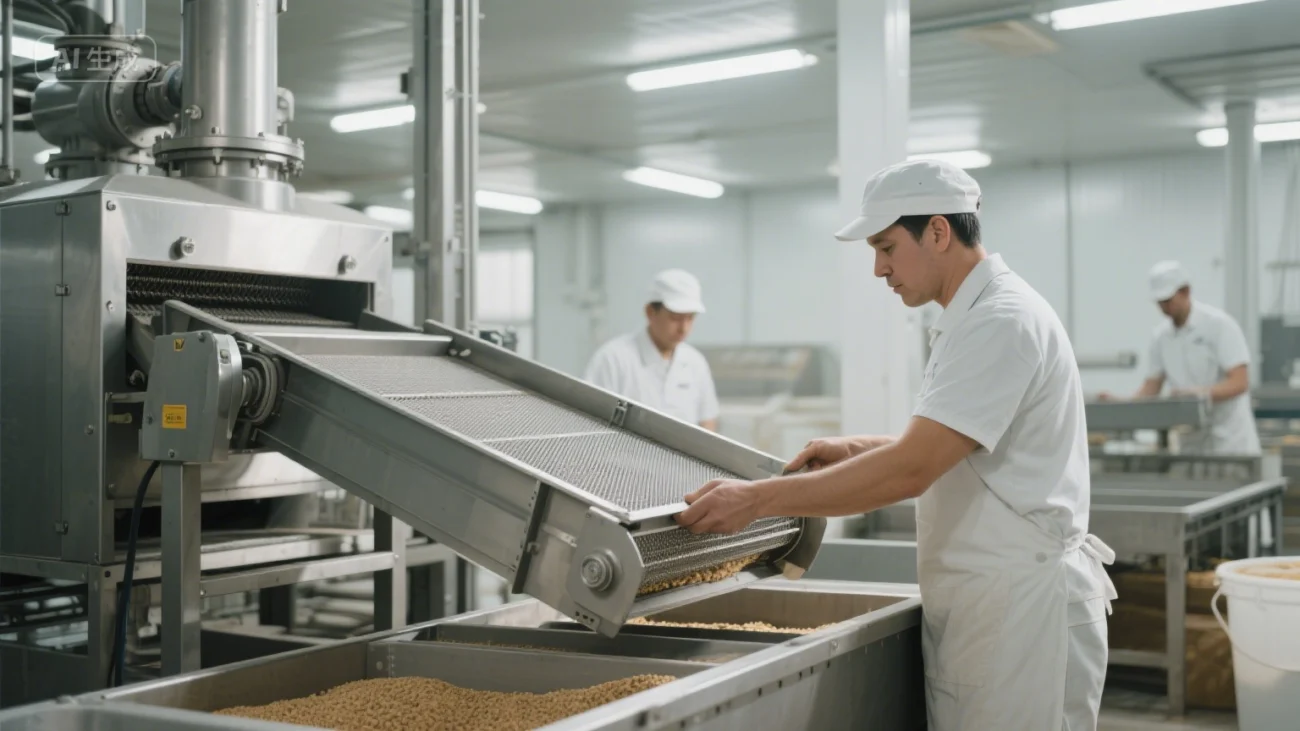Precision Screening in Corn Flour Processing
In the labyrinthine world of USA food manufacturing, few components are as fundamental yet underappreciated as the vibrating screen. In corn flour processing, where consistency, purity, and granularity are paramount, the function of a food powder separator cannot be overstated. Corn, once milled, becomes a complex mixture of fines, husks, and varying particle sizes. To ensure that only the desired granulometry proceeds to packaging or further blending, high-performance food sieving machines are employed. These devices act not merely as filters, but as intelligent classifiers that stratify particles based on amplitude and frequency-controlled vibration.

Within modern processing plants, the GMP vibrating screen has emerged as the gold standard. Adhering to Good Manufacturing Practices (GMP), these screens are built using stainless steel, feature tool-free dismantling mechanisms, and incorporate enclosed designs to prevent cross-contamination. In corn flour production lines, they play a crucial role in the removal of oversized particles and undersized dust that could compromise texture or shelf life.
Moreover, the emphasis on hygiene in food processing equipment USA is palpable. Cleaning-in-place (CIP) systems integrated with food grade vibrating screen units ensure uninterrupted operations and compliance with FDA mandates. The use of ultrasonic technology within these screens minimizes blinding—an issue where fine particles clog the mesh—thus maintaining throughput and minimizing downtime. By transforming raw, inconsistently milled corn into uniform, safe, and high-grade flour, the powder screening machine is not just a utility but a linchpin of industrial food preparation.
Hygienic Separation in Cheese Powder Screening

In dairy processing facilities across the United States, the transformation of perishable milk into shelf-stable cheese powder demands extraordinary care. One of the most intricate phases of this transformation is cheese powder screening, where the application of a reliable industrial sieve machine determines the final product’s flowability, rehydration capability, and aesthetic consistency. A meticulous screening process is critical to meeting not only internal quality benchmarks but also the strict regulatory thresholds imposed by USDA and international food safety bodies.
The food grade vibrating screen stands at the intersection of hygiene and precision. These machines must operate within cleanroom environments, featuring sealed enclosures, FDA-approved contact surfaces, and low-vibration noise thresholds to ensure minimal disruption in high-sensitivity zones. In the context of dairy powders, moisture retention and fat content pose unique screening challenges. High-efficiency food powder separators are calibrated to manage the thixotropic behavior of cheese dust and prevent clumping that often compromises bagging and downstream solubility.
The widespread integration of GMP vibrating screens in cheese processing plants underscores the industry’s pivot toward automation and traceability. These units are frequently paired with data-logging systems that capture screening throughput, reject rates, and contamination alerts in real time. The oscillatory mechanics, often finely tuned for dairy-specific viscosities and particle behaviors, allow for optimal mesh usage and minimal product loss. Thus, from curd to crystalline powder, the food sieving machine assures consistency, safety, and compliance—elements that are non-negotiable in modern USA food manufacturing.
The Strategic Role of Vibrating Screens in Food Safety and Equipment Integration
The contemporary landscape of USA food manufacturing is governed by a triad of principles: efficiency, traceability, and food safety. Within this framework, vibrating screens have transcended their mechanical origins to become pivotal instruments in maintaining hygienic standards across powder processing lines. Whether in corn flour processing or cheese powder screening, these systems are deployed not merely to enhance throughput but to actively prevent contamination and cross-contact.

The evolution of the food safety screening paradigm is evident in the engineering refinements seen in today’s powder screening machines. Dual-motor configurations, quick-release clamping systems, and fully welded seams distinguish the latest generation of industrial sieve machines. These features not only bolster mechanical integrity but also simplify cleaning protocols, making them compatible with Hazard Analysis Critical Control Point (HACCP) standards. In environments where allergens such as dairy and gluten are handled in tandem, the role of the GMP vibrating screen becomes paramount. Swappable screen meshes and modular designs facilitate quick changeovers, minimizing downtime while ensuring allergen segregation.
Integration with broader food processing equipment USA systems further enhances operational agility. Smart vibrating screens now communicate directly with SCADA systems, enabling predictive maintenance and anomaly detection. By identifying deviations in vibration frequency or mesh tension, these machines can preempt equipment failures that might lead to batch recalls. Such innovations align with global shifts toward Industry 4.0, where data-informed machinery ensures not just productivity but consumer protection.
Finally, the food grade vibrating screen offers more than mechanical separation—it embodies a philosophy of process integrity. By serving as both gatekeeper and quality control agent, it anchors the safety and reliability of food powders destined for both domestic and export markets. As the demand for powdered foods surges, especially in functional and convenience product categories, the prominence of the food sieving machine within USA food manufacturing will only intensify, underpinned by its indispensable role in hygiene assurance and operational excellence.
